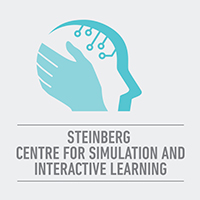Feindel Brain and Mind Seminar Series: Steps Towards Laminar Resolution in Non-invasive Human Electrophysiology

La sÃĐrie Feindel Brain and Mind Seminar sâinscrit dans la ligne de pensÃĐe du DrâŊWilliam Feindel (1918-2014), directeur du Neuro de 1972 à 1984, qui consiste à maintenir un lien constant entre pratique clinique et recherche. Les prÃĐsentations porteront sur les derniÃĻres avancÃĐes et dÃĐcouvertes en neuropsychologie, en neurosciences cognitives et en neuro-imagerie.Â
Les scientifiques du Neuro, ainsi que des collÃĻgues et collaborateurs venus du milieu ou du monde entier, se chargeront des confÃĐrences. Cette sÃĐrie se veut un forum virtuel pour les chercheurs et les stagiaires en vue de favoriser les ÃĐchanges interdisciplinaires sur les mÃĐcanismes des troubles cÃĐrÃĐbraux et cognitifs, leur diagnostic et leur traitement.Â
Pour assister en personne,Â
Pour regarder via Vimeo,Â
Saskia Helbling
Chercheuse associÃĐe, Institut Ernst StrÞngmann pour les neurosciences, Allemagne.
Chercheuse associÃĐe, Institut Max Planck pour les sciences cognitives et cÃĐrÃĐbrales humaines, Allemagne.
ąáÃīģŲąð: christine.tardif [at] mcgill.ca (Christine Tardif)
īĄēúēõģŲ°ųēđģĶģŲ:ĖýAdvances in neuroimaging and electrophysiology have enabled non-invasive investigation of human brain function at increasingly fine spatial scales. I present three interconnected research projects towards achieving laminar resolution in non-invasive human electrophysiology. First, I demonstrate how myelin-informed forward models derived from high-resolution quantitative MRI enhance MEG/EEG source reconstruction. Second, building on this structural-functional relationship, I examine the microstructural foundations of cortical speech tracking. By leveraging high-resolution cortical myelination maps, this approach offers insights into the potential laminar origins of low-frequency auditory activity and top-down modulatory signals during speech perception. Finally, I present a simulation study that investigates the potential of optically pumped magnetometers (OPMs) for inferring laminar origins of MEG signals, demonstrating the benefits of on-scalp sensors for laminar inference. These complementary approaches aim to push the boundaries of spatial resolution in non-invasive electrophysiology, offering new perspectives on cortical layer-specific activity and structure-function relationships in the human brain.

